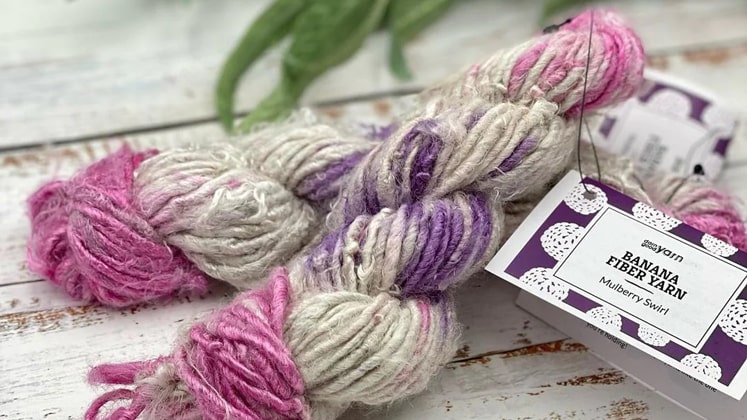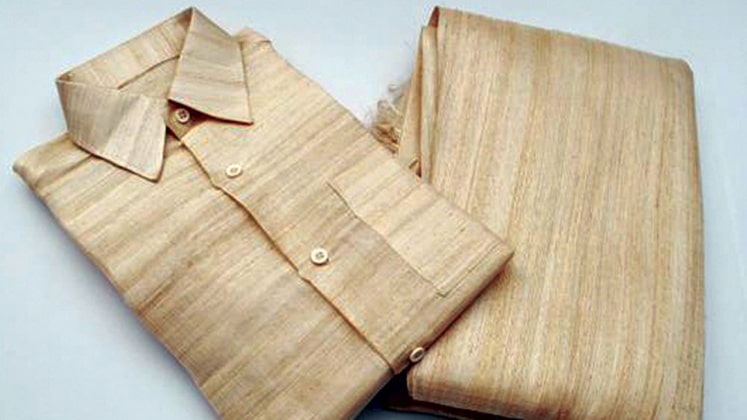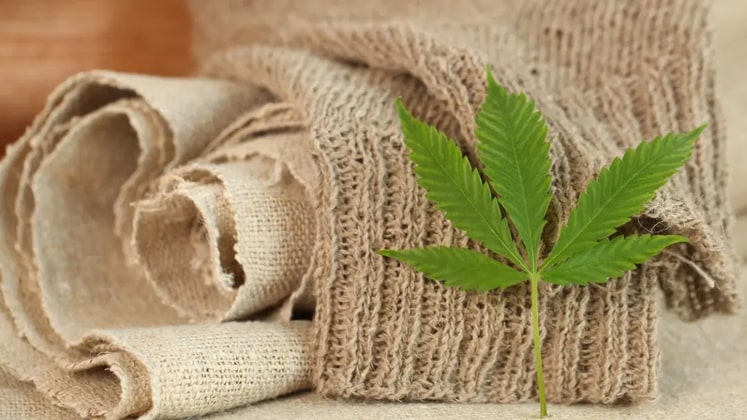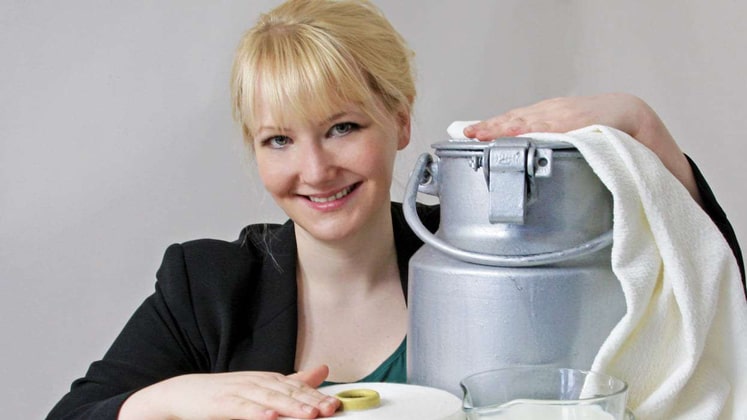The global rise in conscious consumerism is significantly influencing the production and consumption practices of the fashion industry. With growing awareness of the environmental and social impact of traditional fashion materials and packaging, there is a shift towards exploration and utilisation of alternative fibres, fabrics and packaging materials. One notable trend in the fashion industry is the increasing use of natural and sustainable materials as alternatives to conventional fabrics. Designers and manufacturers are now embracing innovative fibres derived from renewable sources such as bamboo, hemp, soy and organic cotton. These materials offer several advantages, including biodegradability, reduced carbon footprint and lower water and chemical usage during production. By incorporating these alternate fibres into their collections, fashion brands are promoting a more sustainable and environmentally conscious approach through their creations. Moreover, the fashion industry is recognising the importance of adopting non-plastic packaging materials. Traditional plastic packaging contributes significantly to the global plastic waste crisis, leading to pollution and harm to ecosystems. In response, forward-thinking fashion brands are actively seeking out eco-friendly packaging alternatives. Biodegradable and compostable materials like plant-based plastics, recycled paper and cardboard are being utilised to package garments, accessories and other fashion products. This shift towards non-plastic packaging aligns with the growing consumer demand for environmentally-friendly practices and demonstrates the industry’s commitment to reducing its ecological footprint.
Market globally
Various research reports show that there is a huge potential for clothing made with innovative or alternate materials. As per a report of Future Market Insights (FMI), the bamboo apparel market was estimated at US $ 2,248.6 million in 2022 and is projected to reach US $ 4,026.9 million by 2032, growing at a CAGR of 6 per cent from 2022 to 2032. The industry’s green approach to product processing and manufacturing is paving the way for market growth.Similarly, Data Bridge Market Research states that the hemp clothing market is expected to reach US $ 81,567 million by 2030, which was US $ 8,586 million in 2022, registering a CAGR of 32.50 per cent during the forecast period of 2023-2030.
| “We used to supply only 30-40 tonnes of hemp yarn annually in 2018 which is now almost 200 tonnes per annum.” Siddharth Mehta, Director, Texventures LLP |
Demonstrating their commitment to sustainability and responsible sourcing, leading brands like Stella McCartney, Patagonia and H&M have actively incorporated alternate fabrics.
Alternate fabric’s properties
Due to the interesting properties (see box) of alternate materials, not only apparel but also shoes, loafers and sneakers are made of bamboo. Most of the alternate materials are being used in menswear as they give a linen look which is preferred in men’s collections. These materials are also used in underwear, socks, T-shirts, bed sheets and bath towels.
| Several natural products are used to create sustainable fabrics, offering eco-friendly alternatives to traditional textiles. The following are some of the commonly used natural materials for sustainable fabric production:
Hemp: Hemp is a versatile plant that requires fewer pesticides and water compared to conventional crops. Hemp fabric is durable, breathable and has antimicrobial properties, making it suitable for various clothing applications. Bamboo: Bamboo fabric is derived from the fast-growing bamboo plant, which requires minimal water, pesticides and fertilisers. The fabric is soft, hypoallergenic and has excellent moisture-wicking and breathability properties. Piñatex: Piñatex is a leather alternative made from pineapple leaf fibres. It utilises by-products from the pineapple industry, reducing waste. Piñatex has a similar texture to leather and is used in various fashion applications, promoting cruelty-free and sustainable choices. Soy Silk: Soy silk is produced from the waste by-product of soybean oil and tofu production. The fibres are soft, lightweight and have moisture-wicking properties. Soy silk fabric is often blended with other materials to enhance its strength and durability. Nettle: Nettle fabric is made from fibres extracted from the stalks of the nettle plant. Nettle plants grow abundantly and require minimal water or pesticides. Nettle fabric is durable, lightweight and has natural antibacterial properties. Banana Fibre: Banana fibre is extracted from the stalks of banana plants after the fruit has been harvested. It is a renewable and biodegradable material with a natural lustre and excellent moisture absorption properties. Breathability, soft and durable properties of products made by banana fibre ensure comfort that feels great on the skin. Milk Fibre: Milk fibre, also known as milk silk or casein fibre, is derived from the proteins found in milk. The proteins are extracted and processed into fibre form, which is then spun into yarns. Milk fibre is soft, smooth and has excellent moisture-wicking properties. It is often blended with other natural and synthetic fibres to enhance its properties. Corn Fibre: Corn fibre, also known as corn silk fibre, is made from the husks or stalks of corn plants. It is a biodegradable and renewable material. Corn fibre is used in textile applications as a natural substitute for synthetic fibres like polyester. Pineapple Fibre: In addition to Piñatex, mentioned earlier, pineapple fibre is also used to create sustainable fabrics. The fibres are extracted from pineapple leaves and can be processed into yarns and textiles. Pineapple fibre fabrics are lightweight, breathable and have a unique texture. Kapok Fibre: Kapok fibre comes from the seed pods of the kapok tree. It is a hollow, silky fibre that is naturally buoyant and resistant to water. Kapok fibre is often used as stuffing material in pillows and cushions, but it can also be spun into yarns for textiles. |
Leaders in this segment
A few of the leading apparel exporters and D2C brands are actively into alternate materials’ usage. No doubt, there are limited players in this segment as the production of such products is not for the masses.
Bhilwara-based vertical integrated company Sangam Group, Tirupur-based export house Cylwin Knitfashions and budding start-up DaMENSCH are a few companies and brands using such materials. Dharamshala-based Its Hemp is India’s first hemp marketplace, offering a large variety of hemp-based products including clothing and Mumbai-based Hemp Fabric Lab is a one-stop solution for designers, creators and exporters to get their share of sustainable fabrics.
Having state-of-the-art knitting and stitch infrastructure, Tirupur-based BS Apparel is amongst the few leading apparel manufacturers that have started working on niche segments like bamboo-based fabric for a long time and got the advantages for the same as well. The company is among the very few Indian apparel suppliers of Puma and it has proprietary patent-pending Bamboo Performance Technology which uses yarn made of BCI-certified 100 per cent organic cotton, bamboo fibre and just a tiny bit of elastane to provide the apparel with the right amount of stretch and also wicks away sweat! Further, the company is exploring merino wool and recycled polyester, as they are very promising for activewear as its buyers are also motivating the organisation to focus on niche segments like wool-base blends etc.

Flatheads, the Bengaluru-based leading D2C brand, is known for all-daywear casual sneakers and backpacks and also offers tees and socks made with bamboo fibre. It offers shoes made with bamboo and banana fibre, vegan leather banana fibre optimised to offer comfort that lasts all through the day. The brand also claims that banana extraction is purely mechanical without the use of any chemicals. A closed knit structure adds strength and vegan leather offers optimum support to the toe and heel area.
| Surat-based Canvaloop offers natural silk replacement fibres made from discarded pineapple leaves, textile- grade fibres made from the wild- growing Himalayan stinging nettle and banana f ibres made from the stem of banana plants, ready-to-spin fibres made from the agricultural residue of hemp grown for medicinal and food purposes. Shreyans Kokra, CEO of the company is also of the opinion that availability is not the issue, in a few cases, but the order needs to be placed in little advance. |
At the international level, many fashion designers are increasingly choosing bamboo materials in their collections. A few examples include Agnes B, Kate O’Connor, Alfred Sung, Oscar de la Renta and Diane von Furstenberg.
Indian designers like Anjali Bhaskar have also introduced a line of clothing that has been effortlessly curated with the usage of pure fibres. The line of clothing is fabricated from plants such as orange, aloe vera, eucalyptus and banana fibres. She shares, “Plant-based fabrics are expensive, but at the same time, provide quality and richness at par with organic cotton, silk and velvet. The look and feel of these plant-based fabrics are at par with the above-mentioned materials. There are a limited number of manufacturers who are completely into vegan, eco-friendly production.”
There are a few other developments that are not so widely known but are niche and interesting like in Kerala, Zuzana Gombosova and Susmith CS have founded Malai which uses an alternate leather material made from waste coconuts. It is a biocomposite material made from entirely organic and sustainable bacterial cellulose, grown on agricultural waste sourced from the coconut industry in Southern India. Winner of Circular Design Challenge,Malai is also a PETA-approved label.
Challenges in this segment
For most such materials, availability is not a major issue as demand is still limited and it keeps changing as per trends and clients’ demands. A few companies are managing their sources locally while some are importing as well.
Cylwin Knitfashions uses bamboo blends with viscose and polyester and sources the raw material from local suppliers and doesn’t see any challenge as the quantity of such material is not high.
BS Apparel is importing bamboo fibres from China as it is comparatively cost-effective and ensures ethical supply.
Texventures LLP, Mumbai is associated with China-based Heilongjiang Kingdom Enterprise which is a global giant in hemp.

Siddharth Mehta, Director, Texventures LLP is assured about the good demand for hemp in the long run as he has seen nearly 5 times growth since 2018. “We used to supply only 30-40 tonnes of hemp yarn annually in 2018 which is now almost 200 tonnes per annum.”
Surat-based Canvaloop offers natural silk replacement fibres made from discarded pineapple leaves, textile-grade fibres made from the wild-growing Himalayan stinging nettle and banana fibres made from the stem of banana plants and ready-to-spin fibres made from the agricultural residue of hemp grown for medicinal and food purposes. Shreyans Kokra, CEO of the company is also of the opinion that availability is not the issue, in a few cases, but the order needs to be placed a little in advance.
Encouraging the use of alternate materials
Offering different niche products to boost sustainability motivates many to explore alternate raw materials. B. Vijayaragavan, MD, BS Apparel, who has vast experience in made-made fibre technology, finds the use of bamboo to be a good experience.

Shreyans also endorses that there is a need to develop infrastructure and to give incentives that can help farmers or other stakeholders who are engaged in the production of such material. At the same time, strict guidelines are also required to curb companies that are resorting to unethical practices rather than offering pure alternate materials as per the commitment to clients.

Focus on packaging
Corn Husk packaging is growing amongst brands as it can be transformed into a packaging material by chemical pulping and paper-making process, making it environmentally-friendly and recyclable. The produced packaging materials are evaluated and tested using the ASTM testing standard. DaMENSCH has also shifted from plastic to corn husk and paper-based packaging which has resulted in saving more than a million units of single-use plastic.

Even global thread giant Coats has recently started its state-of-the-art sustainability hub in Madurai. The hub will explore innovations in raw materials like corn starch, banana and other waste material. Vegan dyes are also on its radar.
Marketplaces with dedicated focus
With the strong support of technology, marketplaces such as ReshaMandi and Jcraft are ensuring greater reach across the market and spreading the use of such material. Blends of bemberg, bamboo and cotton; silk, aloe vera knit as well as woven fabric, organic corn fabric and 100 per cent pure soya fabric are some of the interesting offerings of such marketplaces.
Fashion for Good supporting innovation
Fashion for Good’s efforts in supporting companies offering such innovative materials are worth appreciating, with a few of these companies being:
An Herbals which has patented circular herbal dye extraction, herbal dyeing and bioprocessing technology. It converts waste from the forest, food and ayurvedic medicine industries into dyes that are non-toxic with self-binding, antiviral, antimicrobial, antifungal, anti-odour, UV resistant and mosquito repellent properties for up to 50 washes in all textiles.
Sodhani Biotech, Jaipur produces non-toxic, chemical-free natural dyes and colours from plants, plant waste and micro-organisms, while Faridabad-based UKHI Hemp Foundation is a farm-to-market company, producing more than 500 products from hemp, including hemp textiles.
Spain-based Polybionis growing premium, next-generation materials designed with nature and manufactured with biology. Its first product, Celium™, is a premium alternative to animal-based leather and petroleum-derived synthetics. It is grown by feeding bacteria with agro-industrial fruit waste; the bacteria, in turn, creates cellulose, a natural polymer. Similarly UK-based Saltyco connects the regeneration of damaged wetlands to the production of healthier materials for the fashion industry. Its next-generation textile BioPuff® is a warm, lightweight and biodegradable insulation material made from one of the best plants for wetland regeneration.







